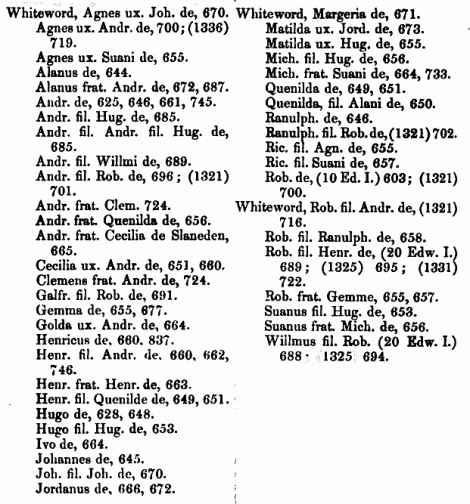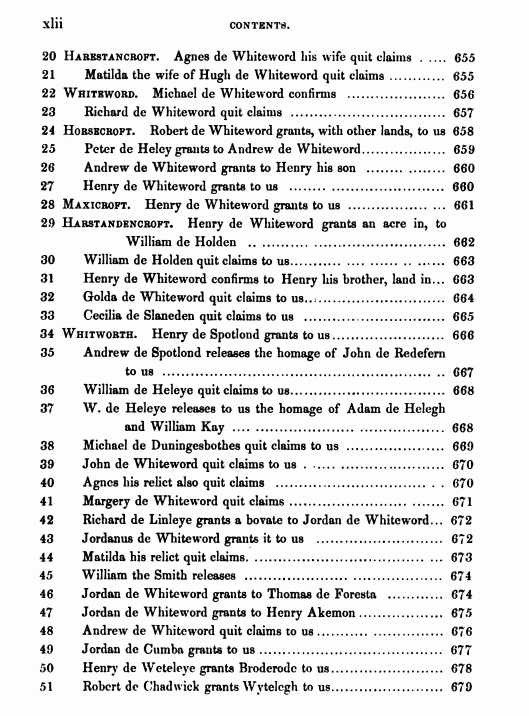
Neglected
It’s time to reveal the neglected medieval history of Salford Hundred, the South East division (known as a Hundred or Wapentake) of the historic County of Lancashire.
Background
The Hundred was administered from the royal manor of Salford, which was in the parish of Manchester. A general history of Lancashire can be found here. This is a good place to start for each parish (follow the links for each parish below), with many references to medieval documents. However, research has progressed greatly since 1911, I will also add a list of more specialized publications that refer to the early history and place-names of the region.
Salford Hundred Parishes
Salford Hundred was divided into 11 parishes. they were:
Ashton Bolton Bury Deane Eccles Flixton Manchester
Middleton Prestwich cum Oldham Radcliffe Rochdale.
This densely populated part of the UK is perhaps the least known when it comes to early history and archaeology, see “Blogroll” for more details.
Surprising Omissions
Many of the sources have been omitted from archaeological surveys and histories of the region. Scans of some deeds are also published here for the first time. Now many sources, transcribed in the 19th Century, are now freely available on-line too.
The Landscape as a Document
A large number of the places and boundaries mentioned in medieval documents can still be seen today, many places were never documented. Landscape history brings documentation to life, and reveals the fascinating evolution of the region’s landscapes. Aerial photography (such as Google Earth and Lancashire’s excellent Mario) and the many maps of the region are vital tools to discover new sites, as well as see known sites from a new perspective.

The Documentation
The Anglo Saxon Chronicle contains a 10th. Century reference to Manchester. The Domesday Book contains references to places in SE Lancashire, in Salford Hundred Rochdale’s had the only thegn (local aristocrat) named in Salford Hundred (only three other places in Salford Hundred are named: Manchester, Radcliffe and of course Salford). Radcliffe and Salford were royal manors.
Other medieval Lancashire sources available on-line are listed below.
Try these archive links
These archives are not in any order and the extent of the documentation relating to Salford Hundred is not yet fully catalogued.
A general overview of Religious Houses (including those with connections to Salford Hundred) is available here, medieval Salford Hundred was in the see of Lichfield.
Lancashire Final Concords – these were legal settlements between parties who had been litigating at court.
Lancashire Assize Rolls – medieval manuscripts are held in the Public Records Office, later Rolls are in the LRO.
The Lancashire Pipe Rolls and Early Lancashire Charters
English Medieval Legal Documents Wiki also has information about the Assize Rolls and other manuscripts.
The Coucher Book of Whalley Abbey details many places mentioned in connection with the Abbey. These Medieval Latin records include hundreds of references to the Parish of Rochdale alone, and are invaluable for research into Medieval Salford Hundred. The transcripts have been scanned and are listed below.
Keele University Library – The Raymond Richards Collection which includes the Hatton Woods collection, which has over 1500 medieval documents relating to the North West and other parts of England.
Lancashire Record Office (LRO) – This major archive also holds medieval deeds previously held in the collections of Rochdale Library.
Greater Manchester Record Office – Some of the major collections are described here.
Manchester Central Reference Library Archives – includes material collected by W. Farrer and Palmer, new on-line search here

Photograph of Chethams Library by KJP1
Chetham’s Library Medieval Manor House of Manchester, Chained Library, Major North West England Archive, and the oldest free library in the English speaking world.
The collections include the extensive Raines manuscripts.
John Rylands Library Major archive and one of the earliest buildings designed for electric lighting. Search on-line here.
Nottinghamshire Archives – Henry De Lacy, Earl of Lincoln, manorial and other records (includes Lancashire lands). Some of the De Lacy records have been transcribed, see the “Two ‘Compoti’ of…” link below.
The College of Arms – holds Kuerden’s manuscripts, a collection of deeds and pedigrees.
Medieval Charters on the Internet
The Bodleian Library has many collections of interest, including The Byron Chartulary ( a collection of charters), also known as the ‘Black Book of Clayton.’ The Bodleian also holds the Chartulary of Cockersand Abbey.
British Library – The British Library holds many deeds and charters for Lancashire, here, for example, are some of the Rochdale documents.
The Cause Papers a searchable catalogue of more than 14,000 cause papers relating to cases heard between 1300 and 1858 in the Church Courts of the diocese of York.
The National Archives include for example the De Banco Rolls from the Court of Common Pleas.
Toronto- document search for over 9,500 documents – includes medieval Lancashire
The Ranulf Higden Society – researches medieval documents from the North West of England.
Cheshire Archives also hold material relating to Salford Hundred, such as wills.
West Yorkshire Archive Service holds records relating to Salford Hundred and Lancashire.
Yorkshire Archaeological Society hold a large collection of medieval manuscripts, see some on-line too. The collection includes documents relating to Salford – Yorkshire Archaeological Society Vol. 56 MD 102 (thanks to Janet at the library for this information).
Note
Many medieval deeds are also in private collections and the archives of landowners.
Finding Information about Famous People from Medieval Salford Hundred
The Oxford Dictionary of National Biography contains information on over 50,ooo individuals, including The Pilkingtons, from the Bury area. Find out about them and much more here.
Transcribed Medieval Documents
Many regional medieval manuscripts have been transcribed (but not translated) by the Chetham Society.
The Coucher Book or Chartulary of Whalley Abbey

The Coucher Book of Whalley Abbey contains hundreds of references to places in Salford Hundred.
The Abbey, was moved from Stanlaw in Cheshire to Whalley in Lancashire in 1296, see an aerial view of the ruins here.
The Chetham Society also produced the “Act book of the ecclesiastical court of Whalley”, 1516-1538 edited by Alice Cooke, 1901.
Reference to some Lancashire wills can be found here.
The four volumes were edited W.A. Hulton, and published in 1847-8 by the Chetham Society.
Note large files!
Two Compoti
John Harland – Lancashire Documents of the 14th and 15th Centuries
Download the free ebook here.
Lancashire and Cheshire Wills and Inventories
Download the Google ebook here.
The Chartulary of Cockersand Abbey
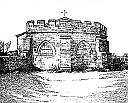 Cockersand Abbey (near Lancaster) held land in Salford Hundred, including Crompton (near Oldham) for example. A transcription was published by the Chetham Society in 1900, read it on-line here.
Cockersand Abbey (near Lancaster) held land in Salford Hundred, including Crompton (near Oldham) for example. A transcription was published by the Chetham Society in 1900, read it on-line here.
The Bodleian Library holds a former Cockersand Abbey manuscript, described in “On a Thirteenth Century Manuscript in the Bodleian Library (Rawlinson, C 317 ) formerly belonging to Cockersand Abbey, and containing Exempla” Transactions of the Lancashire & Cheshire Antiquarian Society ( TLCAS ) Volume 23 1906 p48-6.
See a Map of the Remains of Cockersand Abbey
Find out more…
Mainly Lancashire
- England’s Landscape: The Northwest – by Angus Winchester, 2006, English Heritage (Collins)
- Dialect and Scribal Usage in Medieval Lancashire: A New Approach to Local Documents by C. P. Cummings 1981, Transactions of the Philological Society
- The Origins of Lancashire – Denise Kenyon, 1991
- A frontier landscape: the North West in the Middle Ages
By N. J. Higham 2004.
-
-
- Some Notes on Medieval English Genealogy
-
- Gazetteer of Markets and Fairs to 1516 – Lancashire
What were Medieval Deeds and Charters?
Websites about medieval deeds and charters, are listed below.
The Medieval Genealogy website has information about medieval charters here.
Manuscripts and Special Collections – University of Notingham
History in Deed: Medieval Society & The Law in England, 1100-1600 : Harvard University
University of Toronto Deeds Project
Bracton on the Laws and Customs of Englandattributed to Henry of Bratton, c. 1210-126 Harvard University Website
Reading Medieval Deeds and Charters
The study of ancient handwriting is called; palaeography. You can learn more about reading old deeds and other documents at these websites:
Beginners Latin Course – National Archives
Interesting interactive on-line course here
Palaeography: reading old handwriting 1500 – 1800 – A practical on-line tutorial
Manuscript Studies – University of London
(C) Stuart Mendelsohn 2009-2021

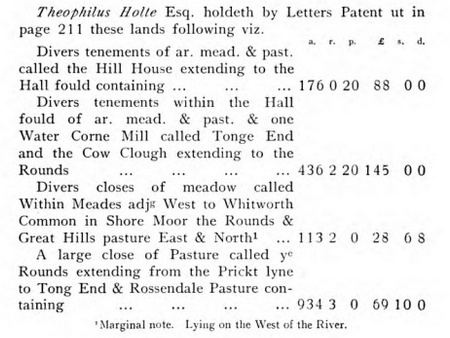
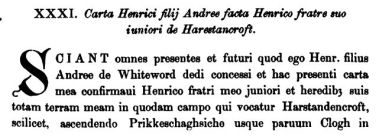

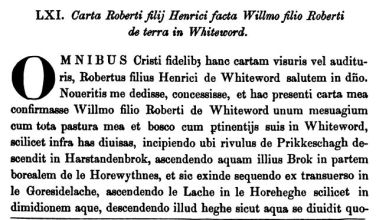
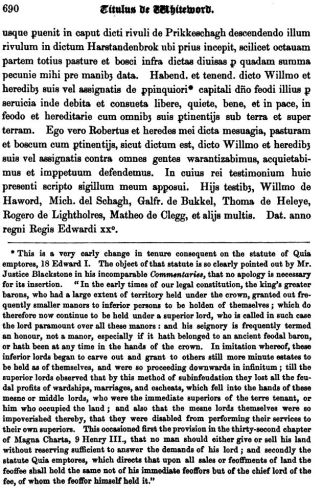



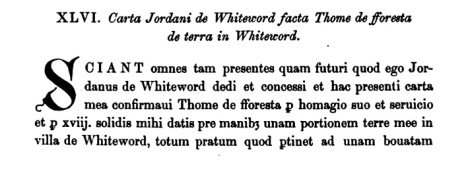
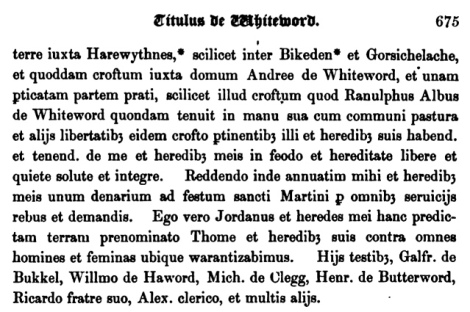


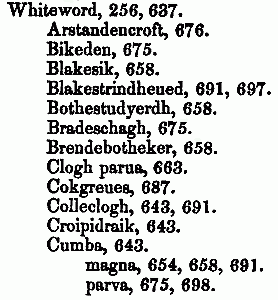
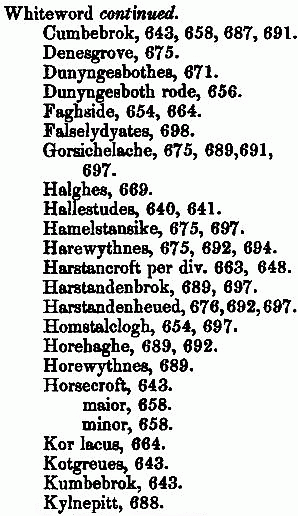 ‘Kor lacus’ translates to lake Kor (Old Welsh perhaps?), which was at Harsenden near
‘Kor lacus’ translates to lake Kor (Old Welsh perhaps?), which was at Harsenden near 

